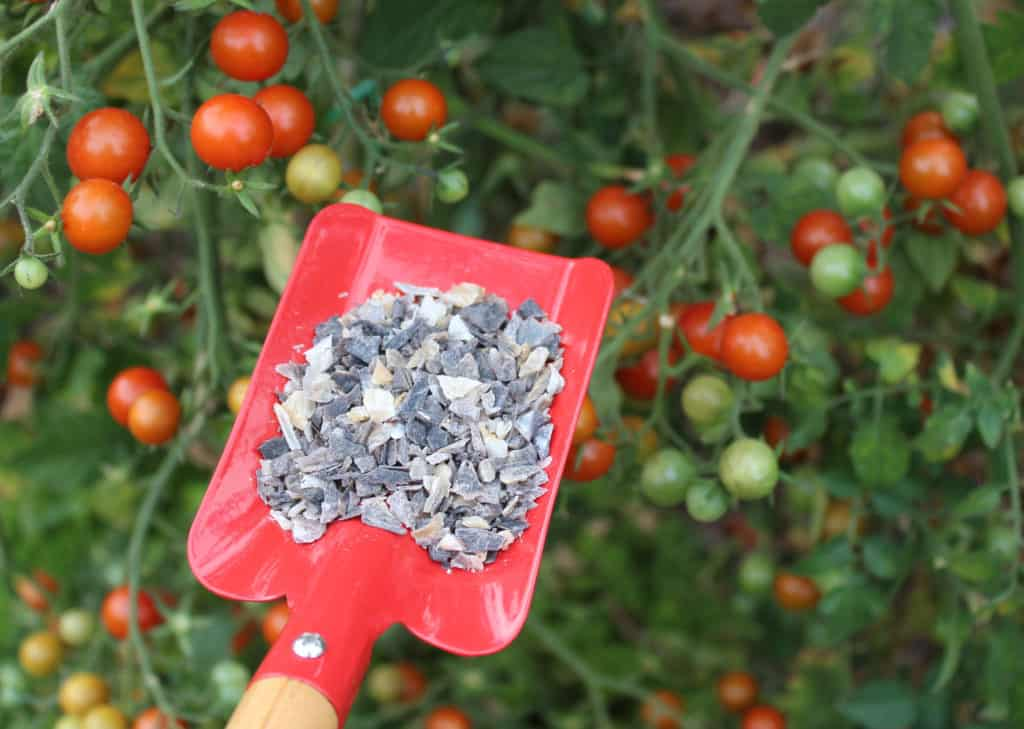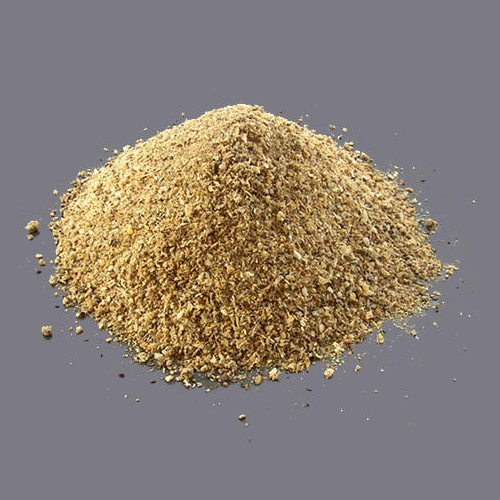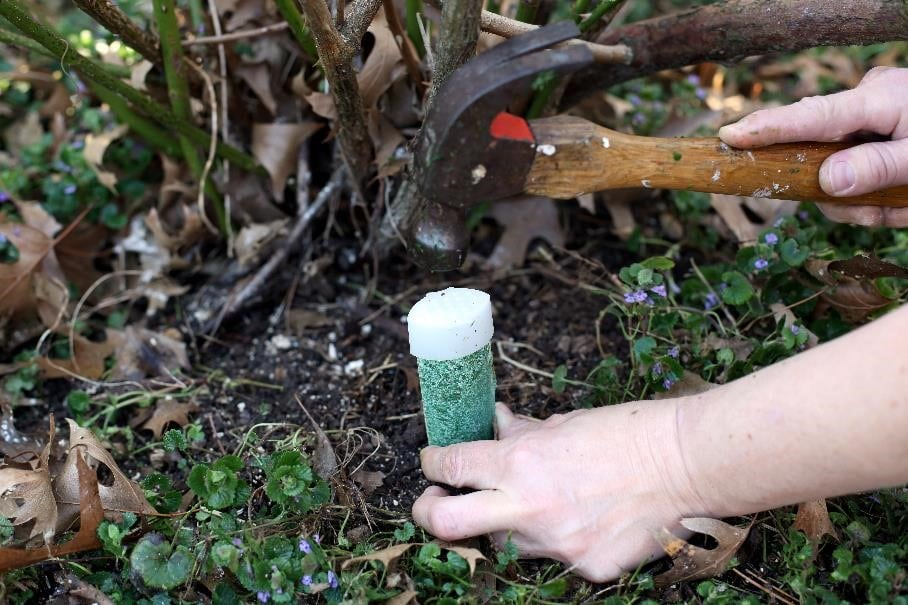
Like many annual plants, tomatoes are grown best with plenty of nutrients throughout the season. Fertilisers can provide tomatoes with the extra nutrients they need to grow.
Fertilising Tomatoes The Right Way
- The tomato plant fertiliser should be mixed with the soil in the planting hole before the tomato plant is planted.
- The unfertilised soil should then be placed on top of this. It is possible to burn the tomato plant if natural fertiliser comes into contact with its roots. Water the tomato plant well before fertilising it after the fruits have set.
- Tomato plants can burn if they are not watered well before being fertilised.
- Apply fertiliser to the ground after watering, starting approximately six inches (15 cm.) away from the base of the plant. Using fertiliser too close to a tomato plant can cause the fertiliser to run off onto the stem and burn the plant.
Nitrogen, phosphorus, magnesium, calcium, boron, zinc and potassium are the primary macronutrients that tomato plants need. It may seem daunting to fertilise tomatoes properly if you are new to gardening, but soil nutrition cannot be overstated.
However, before we proceed, no tomato fertiliser works best for all gardens. This would make gardening a breeze (and even boring). Fertiliser options are based on the plant’s growth stage.
Basics of Tomato Fertilisation
- Tomato plants require different amounts of fertiliser depending on their growth stage. The recommended ratio of nutrients changes with each growth stage, but every nutrient must always be present.
- Fertiliser numbers are assigned to elements such as nitrogen-phosphorus-potassium (or N-P-K). For example, 10-8-10 means the fertiliser contains 10% nitrogen, 8% phosphorous, and 10% potassium, with the rest being filler. When mixing fertiliser into the soil, keep this in mind.
Do Tomato Plants Need Specific Fertiliser Nutrients?
The building blocks of roots are phosphorus and potassium, while the building blocks of foliage are nitrogen and phosphorus.
- For roots and fruit to grow and develop, phosphorus is essential. Consequently, it plays a vital role in the growth process’s beginning and end.
- Foliage is cared for by nitrogen, but too much nitrogen produces bushy plants with little or no fruit.
- Growing plants and producing fruit and flowers require potassium. However, it is essential for photosynthesis and disease tolerance.
There Are Two Ways To Add Phosphorus To Tomato Seedlings.
Regarding phosphorus, combining bone meal and organic fertiliser spikes. If you don’t want to use bone meal because it’s an animal product, measure your soil and add traditional fertiliser.
- Bone Meal
It’s easy to use natural fertilisers like a bone meal while providing sufficient phosphorus to the tomato plants (which aids in fruit production).
This fertiliser comprises ground-up bones, usually beef, but may contain other bones (like fish). The ratio of 3-15-0 is widely used in commercial bone meal products today. Our favourite bone meal fertiliser is Jobe’s Organic 2-14-0. This contains calcium, a micronutrient that prevents tomato blossom end rot.

2. Fertiliser Spikes
After transplanting, it is highly recommended that you place organic fertiliser spikes 3 to 6 inches away from the stem of each plant. The soil’s nutrients are quickly depleted if you’re growing in a container.
All you need is a spike containing a decent amount of nitrogen, potassium, and a high percentage of phosphorus. To apply fertiliser spikes, push them into the soil. The average lifespan of these products is about two months.

How do I choose the best tomato fertiliser?
You must choose a tomato fertilizer depending on the soil’s nutrient content. Testing your soil is a good idea before fertilising tomatoes.
In the case of soils with high nitrogen levels, you should use a fertilizer that is slightly lower in nitrogen and higher in phosphorus, such as a 5-10-5 or a 5-10-10 mixed fertilizer. To compensate for a slight nitrogen deficiency, use a balanced fertilizer like an 8-8-8 or a 10-10-10. The higher phosphorus tomato plant fertiliser can be used if you cannot get a soil test done unless your tomato plants have been sickly in the past. Make sure you don’t over-fertilize tomato plants with nitrogen. As a result, the tomato plant will be lush and green and produce very few tomatoes. If you have encountered this problem, consider simply providing your tomato plants with phosphorus instead of a complete fertilizer.
Compost Fertiliser Tea with Potassium
The peels of bananas are rich in potassium and release slowly when buried, assisting plant growth.
- Make banana peels by collecting a few bananas,
- The best way to do this is to chop them up (as shown in the image below)
- Please put them in the ground and bury them.
During the plant’s growth phase, collect banana peels and make the tea in a big container that you can cover so the smell of rot does not spread. As the season progresses, keep adding more peels.
To Encourage Symbiosis With Tomatoes Use Organic Fertilisers.
Consider Dr Earths Organic’s all-purpose fertilizer if you plan on planting in the ground (as opposed to in containers) to help your plants grow by symbiotically growing with the soil microbes.
When it comes to in-ground tomatoes, why is symbiosis important?
Mycorrhizal fungi, for example, transport phosphorous from the earth to tomato roots in exchange for sugar and starch. You can read more about other phosphorous sources on Grow It Organically, where I learned about this.
Since they are already present, you may not have to artificially induce symbiotic systems into an environment with a well-performing garden. I only recommend this if your garden doesn’t grow green on its own or if many new topsoils have been added.
Organic tomato fertiliser is beneficial for four reasons:
- Their ease of use makes them more convenient.
- Your local water table and the environment will benefit from it.
- The environment is less likely to be harmed by them.
- Overuse of chemical fertilisers (rather than natural, powdered rock) by inexperienced gardeners causes plants to “lockout,” the defence mechanism that prevents them from absorbing nutrients.
Conclusion
Tomatoes need a healthy supply of nutrients. High-phosphorus and potassium fertilisers are the best for tomatoes. For great-tasting tomatoes, these two nutrients are crucial. Fertilizer must be done according to instructions.
Consider your plant’s growth stage and soil analysis to choose your fertilizer. Use a fertilizer with a low nitrogen and phosphorus content if your soil is rich in nitrogen. You should use a balanced fertilizer if your soil lacks nitrogen.
FAQs
How do I choose the best fertiliser mix for tomatoes?
Nitrogen and phosphorus-rich fertiliser mixes are best for tomatoes. To grow tomatoes successfully, you need a fertiliser mix that contains a lot of nitrogen and phosphorus. Calcium, magnesium, and potassium should also be included.
Among the best fertilisers for tomatoes are manure, blood meal, cottonseed meal, bone meal, feather meal, fishmeal, and seaweed extract.
What type of fertiliser promotes the fastest growth of tomato plants?
You can grow more tomatoes in a season by using the right fertiliser. The fertilisers that work best for tomato plants are high-nitrogen, low-phosphorus, and low-potassium.
Fertiliser Is Necessary For Tomato Seedlings
Fertiliser encourages tomato seedlings to grow quickly after germination, with a burst just before flowering. It usually takes four months for them to bear fruit after planting.


